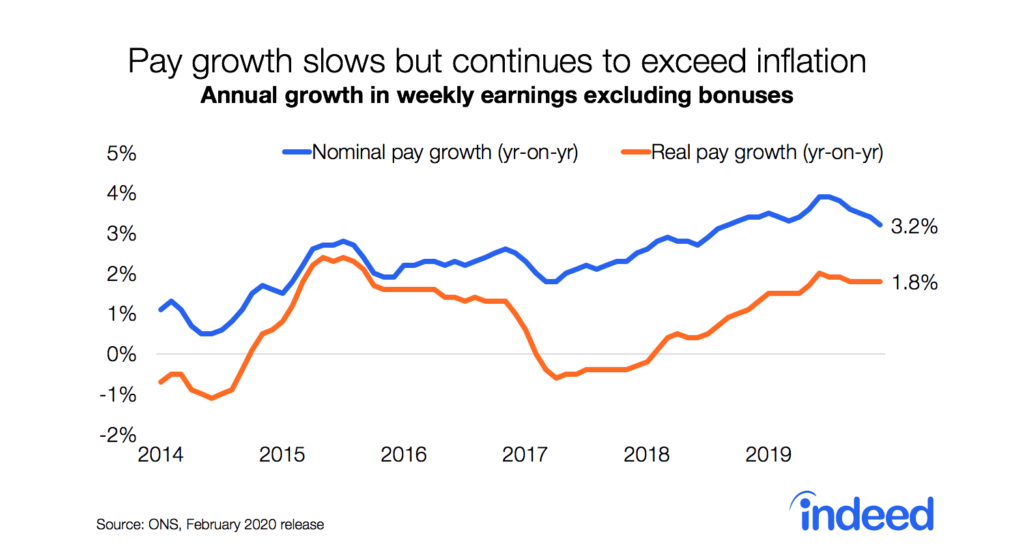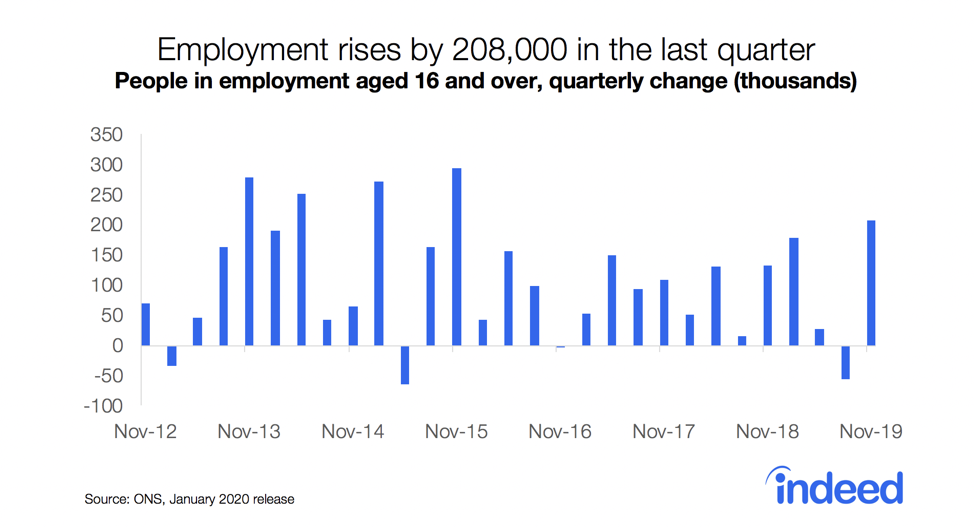Key Points
- Overall job postings grew in the latest fortnight after a slow start to 2022.
- Growth led by several of last year’s strongest performers like loading & stocking, manufacturing and construction.
- Hospitality hiring stabilises after omicron slowdown.
We regularly update this report to track the pandemic’s effects on the labour market.
Job postings resumed an upward trend in the latest fortnight. The headline Indeed job postings tracker signalled a soft start to 2022, partly reflecting the pattern of public holidays meaning a later-than-usual start to new year hiring. Job postings were 39% above the 1 February 2020, pre-pandemic baseline, seasonally adjusted, as of 21 January 2022. That’s up from 34% two weeks previously, but remaining below the peak of 48% at the end of 2021.
Loading & stocking, manufacturing and construction growth
Several of the categories that saw the biggest job postings growth last year posted gains in the latest fortnight, including loading & stocking, production & manufacturing and construction. Dental, chemical engineering and installation & maintenance also saw improvements. Medical information and veterinary saw the biggest deteriorations over the period.
Hospitality stabilises
Hospitality hiring had slowed sharply over the holiday period amid the rise of omicron. But the latest fortnight saw a turnaround, with food preparation & service and hospitality & tourism categories seeing modest upticks in job postings.
Uneven regional recovery
The North East continues to have the strongest regional recovery, with job postings 74% above the pre-pandemic baseline. London remains at the foot of the regional rankings, with job postings up 24%. But the capital’s labour market could be set for a boost by the return of office workers following the end of home working guidance and easing international travel restrictions.
Wide variation in city performance
The strength of job posting recoveries continues to vary considerably at the level of cities and large towns. Sunderland, Wakefield and Plymouth are furthest above the pre-pandemic baseline. At the other end of the scale, Aberdeen job postings show zero growth over the period.
As we discussed in a previous post, posting recovery has generally been stronger in cities with higher shares of manufacturing, distribution, healthcare and education jobs, while areas reliant on hospitality, tourism and highly paid, white-collar, work-from-home jobs trail.
We host the underlying job-postings chart data on Github as downloadable CSV files. Typically, it will be updated with the latest data one day after this blog post was published.
Methodology
All figures in this blog post are the percentage change in seasonally-adjusted job postings since 1 February, 2020, using a seven-day trailing average. 1 February, 2020, is our pre-pandemic baseline. We seasonally adjust each series based on historical patterns in 2017, 2018, and 2019. Each series, including the national trend, occupational sectors, and sub-national geographies, is seasonally adjusted separately. We adopted this new methodology in January 2021.
The number of job postings on Indeed.com, whether related to paid or unpaid job solicitations, is not indicative of potential revenue or earnings of Indeed, which comprises a significant percentage of the HR Technology segment of its parent company, Recruit Holdings Co., Ltd. Job posting numbers are provided for information purposes only and should not be viewed as an indicator of performance of Indeed or Recruit. Please refer to the Recruit Holdings investor relations website and regulatory filings in Japan for more detailed information on revenue generation by Recruit’s HR Technology segment.
*We looked at the relationship between job postings, clicks and wages in sectors experiencing the greatest hiring difficulties in a previous post.






